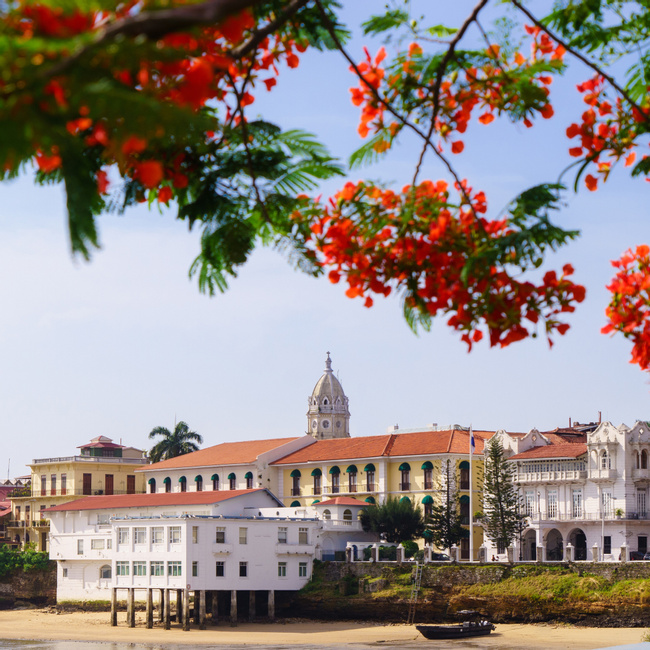- Travel Guides
Weather in Panama
Panama’s tropical climate is the result of its close proximity to the equator. The country lies between 7 and 10 degrees north of the equator, and its daily temperatures and hours of sunlight are fairly constant year-round.

For the most part, the days are as long as the nights; throughout the entire year the sunset/sunrise times vary by only half and hour. The sun rises around 6-6:30 AM and sets around 6-6:30 PM. The temperatures in Panama largely depend on where you are. In the lowlands, temperatures range from about 32˚C (90˚F) during the day to around 21˚C (70˚F) at night. It’s much cooler in the highlands, where the average daily temperature is around 20˚C (68˚F), although it can reach as low as 10˚C (50˚F) at higher elevations.
Panama has a rainy and a dry season. The dry season lasts from mid-December through mid-April. If you want to go hiking or be outside for most of the day, this is the best time to go. Scuba divers should also take note, as water visibility is best during this time of year. Some parts of the country can get rain during this season (mainly along the Caribbean coast), but most of Panama is sunny and dry for this entire 5-month period.
The rainy season generally lasts from mid-April to mid-December. During this season it’s typical for rain to come in large bursts in the afternoon or early evening, leaving the morning and night clear. This being the case, visits during the rainy season are not completely saturated—there is still a great deal you can do during the day, and many travelers even enjoy taking a break during an afternoon downpour.
The rains are typically heaviest near the end of the season, from October through the beginning of December. The Caribbean side of Panama is generally far wetter than the Pacific side. The humidity is high throughout the year for most of the country, but during the rainy season it can reach nearly 100 percent. However, even the heaviest of Panama's rains generally will not prevent you from reaching the country anytime of year.
There are parts of Panama, however, that don’t follow this dry season/rainy season pattern. These include Bocas del Toro, the western highlands, and much of the Caribbean coast. These areas have microclimates that can bring rain during any time of the year, so pack accordingly. The driest time of the year in Bocas is from September-October and February-March.
Once you've determined what time of year you want to visit the country, there's one more thing left to do: verify the entry requirments. These can tend to fluctuate, so it's important that you obtain the most up-to-date information possible.
It's more than just having a good time or visiting beautiful places (although that's absolutely a part of it!), it's about being part of a unique experience that stays with you.



